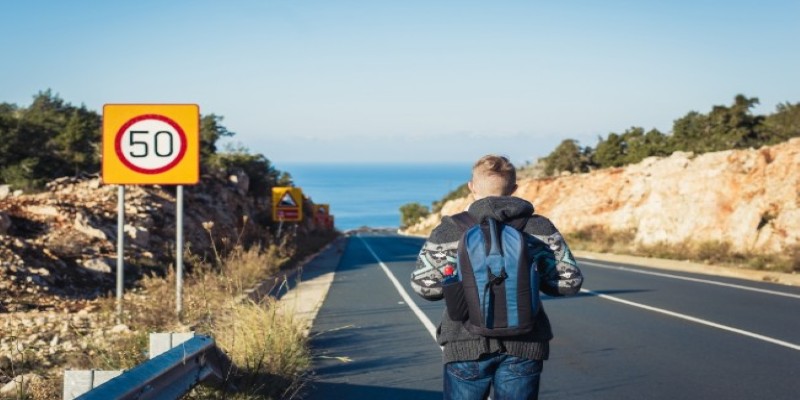Hitchhiking is an adventurous and budget-friendly way to explore, and Canada’s vast wilderness and friendly atmosphere make it an ideal destination for this type of travel. However, there are key things to consider to ensure a safe and successful journey. From understanding local laws to choosing the best routes and prioritizing safety, this guide provides essential tips for those looking to hitchhike across Canada.
Whether you are interested in seeing the beauty of nature or meeting the people, this guide will assist you in making the best of your hitchhiking adventure in one of the world's largest and most diverse countries.
What You Should Know Before You Go?
When embarking on a hitchhiking journey in Canada, there are a few key aspects to consider. First, it’s important to remember that hitchhiking is not illegal in Canada, though there are some restrictions depending on the province or territory. In some areas, it may be prohibited on certain highways or near busy intersections. Be sure to familiarize yourself with local laws before hitting the road to avoid any unwanted surprises. Despite the restrictions, Canada’s general approach to hitchhiking remains relatively relaxed, and it’s a popular way for locals and travelers alike to get around.
Hitchhiking in Canada appears attractive because of its multiple landscapes, from bustling cityscapes like Vancouver and Toronto to remote wilderness tracts. This way of traveling allows you to come to a stop and drink in the surroundings while constantly meeting new people. Generally, the vast openness of the Canadian landscape offers an experience of long stretches, quiet highways, and then nature, which is exhilarating and sometimes daunting and gives the adventure great momentum. It's an opportunity to discover Canada at your leisure and admire its beauty.
Choosing the Right Routes for Hitchhiking
One of the most crucial decisions to make when hitchhiking across Canada is choosing your route. Canadian highways can be very long and isolated, so proper planning is necessary. Keep to well-traveled routes, especially those with service areas or towns along the way. Popular routes include the Trans-Canada Highway, which stretches from Vancouver to St. John's, Newfoundland, offering a direct path through the country's most notable cities and scenic landscapes.

When selecting your route, consider the weather and the season. Canada experiences harsh winters in many regions, and hitchhiking during this time can be particularly dangerous due to cold temperatures and snowstorms. The best time to hitchhike in Canada is during the spring, summer, or early fall when the weather is milder and more people are on the road.
Highways and country roads that lead to national parks, hiking spots, or coastal routes also tend to attract more hitchhikers. In these areas, you’ll find other like-minded travelers, which can make the journey more enjoyable and safe. Research the areas you want to visit and know the distances between towns to help you avoid getting stranded in remote areas.
Meeting People and Enjoying the Ride
One of the most rewarding aspects of hitchhiking in Canada is the chance to meet people from all walks of life. Canadians are known for their kindness and hospitality, and you'll likely meet friendly drivers eager to share stories and local knowledge. These interactions provide an opportunity to learn about Canadian culture and explore areas that may not be typical travel guides.
Engage with your drivers by being polite and open to conversation. While it’s essential to stay cautious, don’t shy away from connecting with others. You may find yourself invited to join them for a meal or even stay at their home.
Beyond meeting people, hitchhiking offers a chance to enjoy the simple pleasures of travel. Whether you’re admiring the Rocky Mountains, crossing the prairies, or watching the waves on the Atlantic coast, hitchhiking in Canada allows you to truly appreciate the country’s natural beauty and diverse landscapes.
Safety Tips for Hitchhiking in Canada
Safety is always a top priority when hitchhiking, and Canada is no exception. While Canadians are known for their friendliness and politeness, it’s still important to be cautious. Here are some tips to ensure a safer hitchhiking experience:
Trust Your Instincts: Before accepting a ride, take a moment to assess the situation. If you feel uneasy about the driver or the car, don’t hesitate to decline the ride. Always trust your gut and only get in vehicles that you feel comfortable with.
Use a Hitchhiking Sign: Having a clear sign with your destination can help drivers know where you're headed and whether they can offer you a ride. It also provides you with a chance to communicate your plans before getting in the vehicle.

Stay Visible: Position yourself in safe and visible locations to ensure that drivers can see you easily. Avoid hitchhiking at night or in poorly lit areas, as it makes it harder for drivers to spot you.
Have a Backup Plan: Always have alternative plans in case you’re unable to find a ride. Know where nearby towns are, and keep a map or GPS handy to help you navigate if you end up walking longer distances.
Share Your Plans: Before you set out, let someone close to you know your plans. Share the details of your route, the towns you plan to visit, and any potential stops. Stay in touch if possible to keep them updated on your progress.
Stay in Touch with Technology: In today’s world, technology can be a useful tool. Having a phone with access to the internet can be helpful in case you need to contact someone or look up alternative transportation options.
Conclusion
Hitchhiking in Canada offers an exciting and unique way to explore the country’s vast landscapes while connecting with locals. By planning your route, staying safe, and being prepared, you can make the most of this adventurous experience. Whether you're traveling through cities, national parks, or remote areas, Canada’s friendly environment and stunning scenery will enrich your journey. Embrace the freedom of the open road, trust your instincts, and enjoy the memories you create along the way.





